LATEST NEWS


Energy efficiency building upgrades have been widely hailed as the low-hanging fruit of the clean energy sector, easy pickings for energy savings that can help jump-start the green economy through job creation and cost savings
But what IS an energy efficiency building upgrade (or retrofit, as it is sometimes called)?
Buildings are improved so that they use less energy and are more comfortable, but without requiring anyone to change their behavior. Think about it: with old, poorly insulated buildings, we are basically paying to heat or air-condition the outdoors. With inefficient heating, cooling, or lighting systems, we are doing something equivalent to burning a paycheck right next to our appliances.
Here’s how an energy efficiency building upgrade works: Typically, a building is first inspected by an energy “auditor” (a horrid word – having an “auditor” come in before a “retrofit” sounds like someone from the IRS is prepping you for a particularly nasty medical procedure – but those are the terms).
» Read more about: How to Save Money (and the Earth) While Keeping Your Bad Habits »
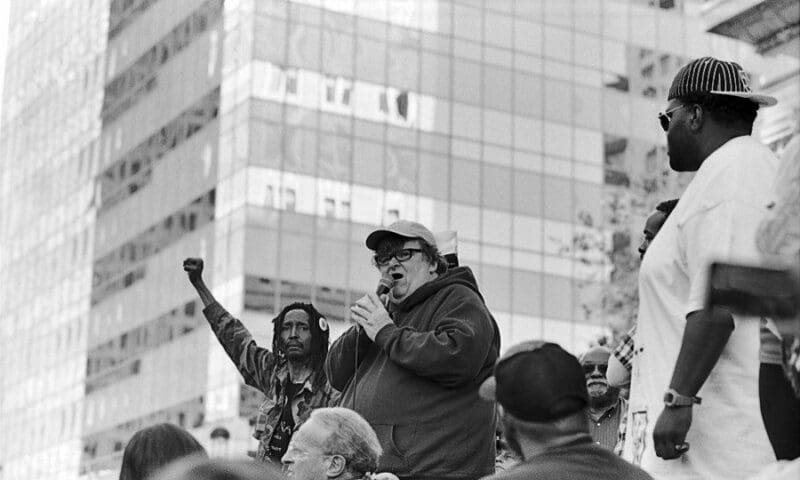
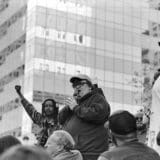
I have been photographing the Occupy camps since the inception of Occupy Los Angeles. I’ve spoken to many people and have thoroughly visited each layer of the emerging strata in the Occupy movement. I have seen it evolve.
On Day One it was as if the raucous levity of Venice Beach had been transplanted to Los Angeles City Hall. But within several days, the occupation had matured. People were tired. For even the most hardy, nights of sleeping on the ground in a not-so-private atmosphere and sharing a rancid pit toilet with hundreds of others is understandably wearing. What is this movement to become?
There is no mainstream media outlet objectively reporting the story. The pushing and pulling of the facts to fit readership deny the true story. Admittedly, I come from a bias of support for the movement. However, there can be no greater support for the movement than holding a great big mirror in the direction of its errant ways.
» Read more about: Are the Occupy Camps Reaching a Crossroad? »


What does the 1970s feminist art movement have to do with Occupy Wall Street? Quite a bit, I found out when I recently attended Still Doin’ It: Fanning the Flames of the Woman’s Building, an exhibit and performance experience at the Otis College of Art that was part of the Pacific Standard Time project. That kaleidoscopic endeavor, sponsored by the Getty Museum, looks at Los Angeles art from 1945-1980 and takes place in museums and venues across Southern California over the next 12 months.
The early participants of the Woman’s Building, including founder Sheila Levrant de Bretteville and performance artist and Otis professor Suzanne Lacy, described the motivation that drove them to that institution in 1973. At that time women artists and their work were largely ignored by the established arts institutions, and emerging women artists found few opportunities for support or mentorship of their art.


If you’re not a subscriber, I guess you’ll have to pay for access to this recent New Yorker piece, but it is well worth it. Evan Osnos took a look at Japan and the Fukushima nuclear meltdown seven months after the terrible tsunami destroyed so many lives and very nearly killed many more.
This is compelling writing and reminds me of something I’d forgotten—hadn’t we all agreed that nuclear disaster was a real and legitimate fear again, and change was needed? What happened?
The article raises a theory that resonates. In a long section in the middle of the piece detailing the history of nuclear power in Japan, Osnos notes that post-Chernobyl Japanese officials actually became less safe and at the same time more assertive of the safety of nuclear power.
The idea was to defend the industry against attacks by distinguishing the practices in Japan from those in the USSR,
» Read more about: Eating Blinky: Nuclear Power Safety Jitters »
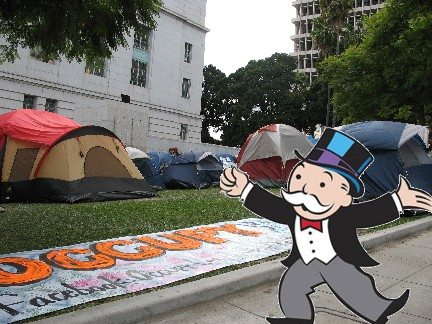

By now it’s obvious that Occupy Wall Street’s sophomore month is spawning a spin-off sideshow – a kind of reality TV moment in which conservative media apologists for the “one percent” alight from taxis and wade into crowds of protesters who are wearing hoodies and black bandanas. Into the belly of the collectivist beast, as it were. The pundits then vigorously articulate their grievances against the 20thCentury to the Occupiers and the merely curious who have gathered round.
The trail for these adventurers was blazed by Fox News eminence grise Geraldo Rivera, whose tumultuous forays into Ziccotti Park have made him a martyr to tax-paying “53 Percenters” from Montauk Point to Santa Clarita.
Last week Reason TV, an arm of the libertarian magazine Reason, produced a video in which radical free-marketeer Peter Schiff made a similar pilgrimage into the lion’s den.
» Read more about: Occupy America: The Right’s Newest Reality TV Show »


Named one of UTNE Reader’s “50 Visionaries Who Are Changing Our World,” Dave Zirin is among the few journalists who approach sports from a progressive perspective. He’s a prolific author and commentator, and his writing for The Nation offers a welcome respite from the drone mentality of mainstream sports coverage.
Most recently, Zirin has co-authored The John Carlos Story: The Sports Moment That Changed the World (Haymarket Books). The book revolves around Carlos’ black-gloved salute at the 1968 Mexico City Olympic Games, an historic moment executed in conjunction with gold-medal winner Tommie Smith. With Zirin joining Carlos on an extensive book tour, the Frying Pan caught up with Zirin by email to ask about his book and what it’s like to write about sports for The Nation.
Frying Pan (David Davis): Why do the upraised black-gloved fists of Carlos and Smith still resonate more than 40 years after the 1968 Mexico City Olympics?
» Read more about: Dave Zirin Interview: How Two Black Gloves Changed History »
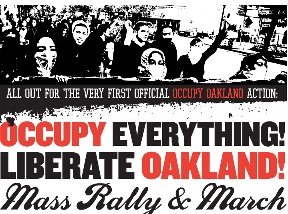

A Notch on Our Bedpost: NCAA “Non-Employees” Make Progress
Last week and again this week we wrote about the NCAA and the mistreatment of college football players.
Through their union, the National College Players Association, some players have been demanding reform, seeking modest changes in the ridiculous NCAA rules. Their list includes allowing schools to cover books and other expenses as part of scholarship offers (something non-sports scholarships can include), and allowing schools to offer multi-year scholarships, rather than have to renew each year—a rule that is particularly onerous, since if a player transfers, he generally must sit out a year.
Apparently the NCAP (and Taylor Branch and, of course, the Frying Pan) is making headway, because yesterday the NCAA announced several rule changes, addressing both of those points.
Of course,
» Read more about: Interweb Special: Sports, Disease, Violence! (What, no Sex?) »
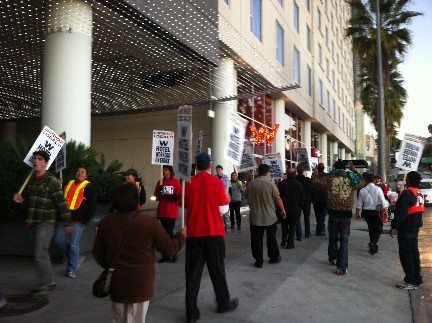
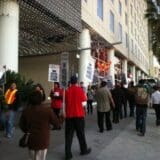
Hollywood’s luxurious W Hotel was struck and picketed early this morning by more than 100 union members. The housekeepers, bellmen and servers, who belong to Unite Here Local 11, walked off their jobs at 6 a.m. to protest what they say is management’s refusal to let them take scheduled breaks.
“We are on strike today to show the W Hollywood that we deserve the right to take breaks,” Mildred Velasquez, a W housekeeper, was quoted in a statement prepared by the union. “The W Hollywood Hotel needs to respect the limits of our bodies. Managers put too much pressure on us. I hurt my back deep cleaning-rooms at the W. Now I take prescription and over-the-counter pain medicine every day.”
When contacted by the Frying Pan, a management spokesman for the hotel, who requested anonymity, claimed no hotel employees were participating in the walkout.
The one-day action,
» Read more about: Breaking News: W Hotel’s “Striking” New Look »


I’ve recently found myself fascinated (and a little obsessed) with the lives of three superstar women who aren’t afraid to expose their weaknesses to a world that is only familiar with their strengths.
Gloria Steinem and Jane Fonda were each interviewed on TV in the same week that a DVD arrived from Netflix, Eleanor Roosevelt—An American Experience.
Of the many traits they have in common, the one that struck my interest was that they each developed such a late-career sense of self-esteem. Each acknowledged that she didn’t come into her personal comfort zones until she was in her 70s.
“Me too,” I kept mumbling, “me too.,”
Now in my 80s, I am convinced that these may be the most fulfilling years for some of us.
Each of these remarkable women speak about childhood wounds.
» Read more about: Reflective and Proactive in Our Senior Years »
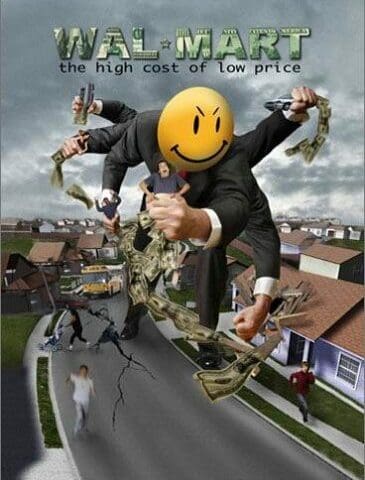
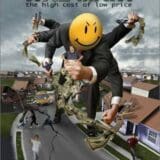
A couple of weeks ago, at a community meeting with other members of the Alliance for Healthy and Responsible Grocery Stores, I got to hear some testimony about working conditions at Walmart from a group of women who work at the retail giant’s stores around Los Angeles County. Our alliance is dedicated to making sure that grocery stores have the best impact they can on our city. After Walmart’s announcement that they were expanding into urban markets with smaller-scale grocery stores, we invited some workers to tell us about life as Walmart “Associates.” I will respect their anonymity here, so as not to cause them problems on the job.
I didn’t expect to hear much that was shocking, but what I heard that day threw me for a loop. I couldn’t stop talking about it to my wife when I got home.
As someone who works on food justice and economic issues,
» Read more about: Learning about the Real Walmart from the Workers’ View »


I recently received an invitation to my 10-year high school reunion, and let’s just say I have absolutely no intention of going. First of all, every day on Facebook is a high school reunion. But second, for me, as well as many others, high school was brutal. And for anyone who forgets that and is filled with a silly nostalgia for yesteryear, I encourage a viewing of the movie Heathers or even a recent episode of Glee – both of which are full of popularity contests, cliques, and the compulsion to “look good” at all costs. After high school, everyone tells you that the days of “trying to fit in” and being “cool” are over.
“The real world,” they say, “is about succeeding at college, getting a career, etc., and has nothing to do with being the captain of the football team.” But after my 10 years in this so-called “real world,”


I’ll call him Alex. We work together at the RH restaurant at the Hyatt Andaz hotel on the Sunset Strip in West Hollywood. We are uneasy around each other now, since the strike. He chose one side. I chose another.
For the better part of a week in September, I watched him from outside the window. I held my Unite Here picket sign and wailed on the drum as he poured drinks for distraught customers. My blood boiled when I found out he crossed the picket line, and I’m sure he wasn’t happy that I was at least partially responsible for his lack of business in the restaurant. We made uncomfortable eye contact through the window far too many times.
Going on a strike and living its aftermath are like going through a divorce, where the children are told to pick a side. Some of us journey all the way through with one parent,
» Read more about: Words with Friends: A Strike’s Personal Fallout »
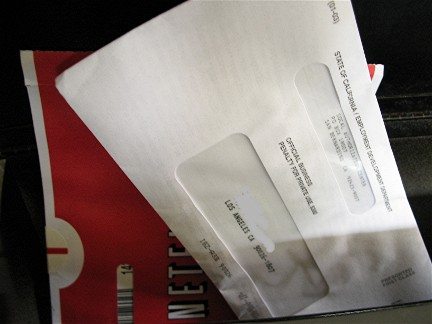

It’s been a while since the postman rang twice, but he won’t even be ringing once on Saturdays, if new proposals to downsize the U.S. Postal Service go into effect. Like so many of the economic wars being waged today, the attack against the post office doesn’t make financial sense. The USPS is immensely profitable and it is not a department of the federal government, nor are its operations paid for with tax money. It also remains one of the most efficient and popular services — putting a movie DVD in your mailbox may have been Netflix’s neat idea, but that company isn’t the outfit whose employees deliver those movies to your home.
And yet closing down the post office and parceling out its services (or at least, the profitable ones) to private companies occupies a special place in the ether dreams of anti-government radicals and free-market privateers.
“We’re off-budget,” Larry Brown recently told the Frying Pan,


Just about every day we hear about how consumer spending is the main driver of the economy. If only we’d spend more money, we could get the economy back on track. (Of course, this is overly simplistic, and fails to account for any number of factors, not least being the continued drag of housing on the economy, as well as the mountains of cash that businesses are sitting on as they fail to hire workers.)
So I’m doing my part—in fact more than my part.
You see, in a few days, I’m getting married. I never would have imagined the amount of money that my wedding is plowing into our local economy: thousands of dollars to a caterer, a bartending service, an equipment rental outfit, a DJ. We’re renting a municipally-owned venue, so the City should be getting a taste,


There’s something eerily Orwellian about the recent blog post, by L.A. Area Chamber of Commerce president Gary Toebben, entitled “L.A. Should Vote Down New Bureaucracy to Regulate Banks.” Mr. Toebben claims that a proposed new city ordinance that would reward banks that act responsibly toward L.A. consumers with the city’s deposits is “overly burdensome” and an “unnecessary regulation.” This is because, Mr. Toebben argues, “the federal government oversees a heavily regulated banking industry” — implying that businesses like banks and other job creators need to be left free to make lots of money, create lots of jobs so that the benefits can trickle down to everyone else.
Say what?
The banking industry in the United States is “heavily regulated?” Really? Did the L.A. chamber somehow miss the great recession of 2008? You know, that one where the under-regulated banks got into so much trouble that we had to spend more than $700 billion in taxpayer money to bail them out?
» Read more about: The Chamber of Commerce’s Orwellian Position »


We know Los Angeles is in dire need of both jobs and a transportation system that works. Recently, the Metro Board of Directors took action by moving forward on a sweeping, agency-wide Construction Careers Policy covering Metro construction projects for the next 30 years, including projects funded under Measure R, the half-cent sales tax.
The vote at Metro was preceded by more than a year of hard work by LAANE, the L.A./O.C. Building Trades Council, and a coalition of community, environmental, labor, and transportation advocates – all united to make sure that our tax dollars are used to make Los Angeles a working, greener city. This policy brings together the taxpayers’ wishes for better public transportation and our critical need to get Americans back to work.
Anthony Mitchell, an electrician and single father of two whose family is facing foreclosure, attended the vote.
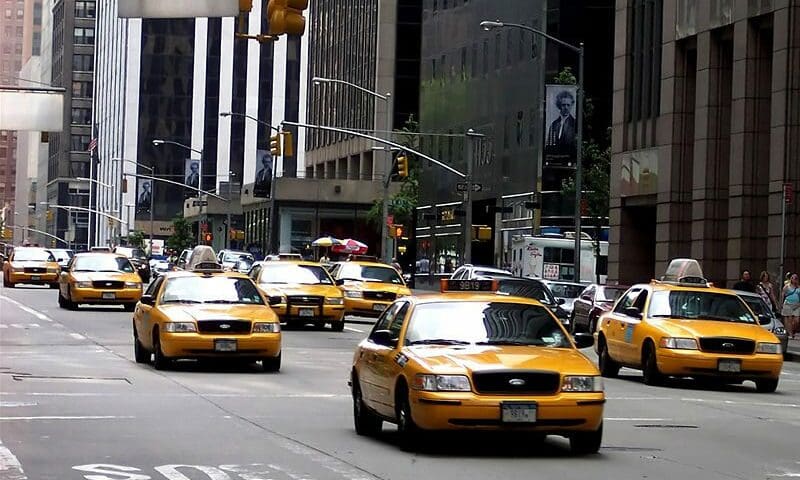

As reported in a leading New York business paper, “the National Taxi Workers Alliance, which is not formally a union, is the first non-traditional labor organization to join the AFL-CIO since a farm workers group was chartered in the early 1960s.” This is exciting news for a few reasons: first, because it illustrates that labor leaders are thinking more creatively about how to reach hard-to-reach workers, and also because it shows how those organic worker organizations are getting formal institutional support. This is a good thing for both sides.
Beyond this, as the AFL-CIO blog entry describes, these are marginalized workers, workers who have historically been deprived of their legal rights because they have been misclassified as independent contractors. This is a problem we have seen again and again, and which we have visited before on the Frying Pan. As employers continue to push the envelope with these legal shenanigans,
» Read more about: Interweb Special: Taxi Alliance Joins AFL-CIO »
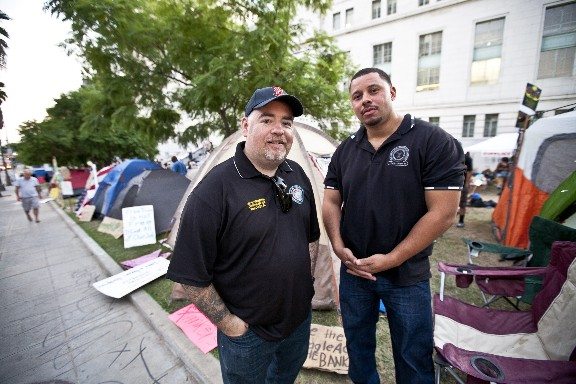

What would cause 13 mostly 30- and 40-something electricians to come up with an event like the “Solidarity Sleepover” at Occupy LA? It all started with a text message. Howard Brown, adventurer, electrician and Occupy LA supporter wrote me, “would like 2 c mas union presence.” I had not been down to Occupy LA and before I put my name near it, I needed to do some recon to check it out. I had heard that it was this leaderless movement that really had no strong positions on anything because they could not get a consensus from the group. Being a lifelong Democrat, that sounded vaguely familiar. So down to City Hall I went with my good friend Gary in tow. I figured I needed some backup in case somebody tried to put a red Che Guevara beret on me when I wasn’t looking.
What Gary and I found instead were really cool,
» Read more about: What the Hell Is a Solidarity Sleepover? »


I am particularly fond of Kenny Rogers’ song “The Gambler.” At a recent hearing for the Los Angeles City Council Ad Hoc Committee on Waste Reduction and Recycling, I kept thinking about this song as I heard many business groups and trade associations lobby against true reform of L.A.’s waste collection system.
The debate stems from how the City of L.A. should reform its system for dealing with waste at businesses and large apartment buildings. On one end, you have the Don’t Waste L.A. coalition, to which I belong through the Natural Resources Defense Council. It is a broad coalition of environmental, community, faith-based, economic justice and labor groups, advocating for a comprehensive solution to dealing with L.A.’s waste woes, instead of kicking the can down the road. You can read more about the coalition’s positions here and here. On the other hand, some business lobbying groups and trade associations are advocating for a system that keeps the status quo in place.
» Read more about: Let’s Not Gamble with Los Angeles’ Garbage »


The great journalist Lincoln Steffens visited the USSR shortly after the Russian Revolution and infamously declared that he had “seen the future and it works.” My wife Mickey and I recently returned from a touristic trip to Norway, Sweden and Denmark. Most of our time was spent in typically touristic ways, but inescapably (and with help from our excellent tour guides) we got a taste of policy and politics in the current Scandinavian way. What we learned makes me want to say that we saw one future that seems to be working.
Norway is still responding to the horrifying July 22 terrorist massacre—but Norwegians are likely to say, as did Prime Minister Jens Stoltenberg: “You will not destroy our democracy or our commitment to a better world. We are a small but proud nation . . . but no one will ever frighten us away from being Norway . . . the answer to violence is even more democracy,
» Read more about: Fjord Foundation: Norway’s Solid Safety Net »